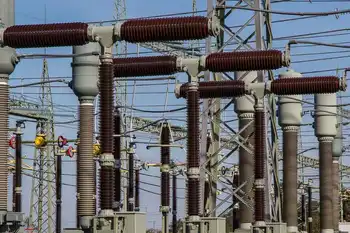Ontario's IESO releases 18-month outlook
- The next 18 months will see the transition to renewable resources continue at a significant rate, as several thousand megawatts MW of grid-connected wind, solar and biomass projects are integrated into normal operations. Preparations for these changes began several years ago, and are now starting to yield results in the areas of forecasting and visibility. The next element – dispatch of grid-connected renewable resources – is planned to be in place within the forecast period, and will give the IESO a necessary tool to help manage the system efficiently and reliably.
Ontario will continue to have adequate generation and transmission capability to meet consumersÂ’ needs over the next 18 months. Throughout that period, the IESO is expecting more than 3,200 MW of transmission grid-connected renewable capacity to be added to the power system, including OntarioÂ’s first two transmission grid-connected solar projects, located in Haldimand County and Elgin County. The annual energy expected from the addition of these renewable resources is approximately 10.9 terawatt-hours TWh.
During the summer of 2014, Ontario will see its largest influx of wind generation projects with over 1,000 MW of installed capacity integrated onto the grid over the three-month period. By August 2014, the total wind and solar generation connected to the transmission and distribution networks in Ontario will reach approximately 6,800 MW and provide approximately 14.9 TWh of annual energy.
Progress continues to be made in removing coal-fired generation from the supply mix in Ontario in line with government policy. The remaining generating units at Lambton and Nanticoke are scheduled to stop burning coal by the end of 2013 and the conversion of Atikokan generating station from a coal-fired unit to biomass is underway, with the unit expected to be in service by the third quarter of 2014.
Ontario continues to experience growth in both embedded generation capacity and participation in conservation initiatives. Conservation reduces end-use consumption while embedded generation simply offsets it, both leading to a reduction in the wholesale demand measured by the IESO. These two factors combined will more than offset any demand increases from population growth and economic expansion, leading to an overall decline in electricity consumption as measured at the wholesale level. Energy demand is forecast to decrease by 0.6 in 2013 after the 0.4 increase seen in 2012.
The growth in embedded solar capacity over the forecast horizon will have a significant impact on summer peak demands by effectively reducing demand for grid-supplied energy during those sunny days. Time-of-use rates and the Global Adjustment Allocation will add to this downward pressure on the summer peaks. Winter peaks, by contrast, will show a slight increase since they occur in the evening and will not be affected by embedded solar generation. They are also unlikely to be among the yearÂ’s high-five demand days and, therefore, not affected by the Global Adjustment consumption response. The following table summarizes the forecasted seasonal peak demand numbers.
With declining wholesale demand for electricity and significant quantities of baseload generation on the system, Ontario will continue to experience surplus baseload generation SBG conditions. The inclusion of wind resources in the dispatch process and the increasing volume of nuclear manoeuvering during the outlook period should help alleviate some of these SBG conditions however, some events may need to be managed through control actions, such as import curtailments.
Related News

EV Fires Raise Health Concerns for Firefighters
MIAMI - As electric vehicles (EVs) become more popular, the risks posed by EV fires to firefighters are becoming an increasing concern. These fires, fueled by the high-capacity lithium-ion batteries in EVs, produce dangerous chemical exposures that could have serious long-term health implications for first responders.
Claudine Buzzo, a firefighter and cancer survivor, knows firsthand the dangers that come with the profession. She’s faced personal health battles, including rare pancreatic cancer and breast cancer, both of which she attributes to the hazards of firefighting. Now, as the shift towards electric vehicles increases, Buzzo and her colleagues are concerned about how…




